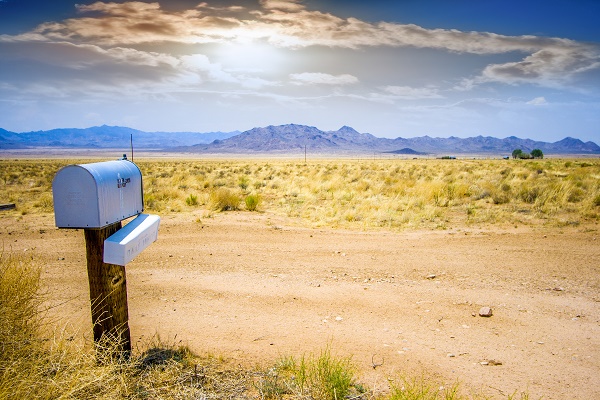 I see this question often, whether it's in my inbox or in online author groups.
The answer depends on a number of things, including whether you write fiction or nonfiction, how much time you can devote to e-mail marketing, and whether you've got a blog with content that appeals to your target audience.
There's more to staying in touch with fans by e-mail than figuring out what to write about, though. If you haven't started the process yet, you'll find these four basic steps helpful.]]>
I see this question often, whether it's in my inbox or in online author groups.
The answer depends on a number of things, including whether you write fiction or nonfiction, how much time you can devote to e-mail marketing, and whether you've got a blog with content that appeals to your target audience.
There's more to staying in touch with fans by e-mail than figuring out what to write about, though. If you haven't started the process yet, you'll find these four basic steps helpful.]]>The answer depends on a number of things, including whether you write fiction or nonfiction, how much time you can devote to e-mail marketing, and whether you’ve got a blog with content that appeals to your target audience.
There’s more to staying in touch with fans by e-mail than figuring out what to write about, though. If you haven’t started the process yet, you’ll find these four basic steps helpful.
Step 1: Add yourself to newsletter lists
I always recommend that you subscribe to the lists of others and study what they do before you create your own newsletter or make content decisions. You’ll see what you like and don’t like and get a sense of different styles and formats.
Don’t limit yourself to authors in your genre. And don’t limit yourself to authors, either. Add yourself to the lists of online marketers, too, so you can see how the pros do it. There will be things you don’t like (including the daily frequency of many of them), but you might pick up a few ideas you like, too.
Step 2: Start building a list
While you’re studying what others are doing and before you finalize what to send your list, you need to start building that list because it can take time to acquire enough e-mail addresses to mail to.
The most important thing to know is that people have to give you permission to send them repeated messages. They have to “opt in” to your list. For information on how to make that happen and some of the resources that will help you, read “Building your author e-mail list” on this site.
As noted in that article, the best and easiest way to start gathering addresses is by adding a form to your website. The form needs to be linked to an e-mail management service (you’ve heard the names before — iContact, Constant Contact, aWeber, MailChimp, etc.). (A couple of those are affiliate links.) Each service offers tutorials that walk you through the process of connecting their software to your website. If it’s over your head, do what I do: Call them or pay someone to do it for you.
Step 3: Determine frequency
Once you’ve started building your list, it’s time to think about how often you’ll mail to them and what you’ll send.
Frequency options include:
- Occasional or “as it happens.” Some authors prefer this because they’re not locked into a schedule.
- Quarterly. It’s an easy schedule, but quarterly isn’t frequent enough to be effective.
- Monthly. Many find this do-able. Try to send it on the same day every month.
- Bi-weekly. Do you have enough to say to send an e-mail twice a month? Can you sustain that frequency?
- Weekly. You’ll certainly be top of mind with your list if you communicate on a weekly basis, but most authors will struggle to maintain this schedule, especially those who don’t write for a living.

Author Kim Werker sends her newsletter weekly in part because she needs the routine generated by that frequency.
“I’d feel crushed under the stress of fitting it into a less frequent schedule and wouldn’t end up doing it at all,” she says.
I started sending the Build Book Buzz newsletter on a monthly schedule but had so much how-to information to share each month that I worried that it was getting too long. I split the content into two issues, e-mailing it biweekly now on the second and fourth Wednesday of the month (if I didn’t carve those distribution days in stone, it would never happen). In between, I send occasional short e-mails offering special deals and promotions.
Now, it has a new format and it’s weekly.
What combination of information and frequency works for you? Make your decision based on what you think is possible now. You’re not locked into it. You can always make changes later.
Step 4: Decide what you will put in your newsletter
So what do you write about in your newsletter? Let the approach or format you use guide your content. Format approaches include:
- Occasional pre- and post-publication announcements related to your book, your genre, or your topic. With this approach, you don’t need a regular publication schedule. Information included might be a cover reveal, exciting cover blurbs from influential people, requests for beta readers, news from your genre or industry, review summaries, reviewer requests, scheduled book signings, and so on. Make sure you’re not overly self-promotional. Make your content as reader-focused as possible.
- Big announcements only. These don’t need a set schedule, either. If you write one book after another, this could work well, and could be a great way to solicit fans for early reviews. However, if you don’t plan to write more than one book, you’ll run out of big announcements pretty quickly and will need to find another reason to stay in touch.
- Links to your blog postings. If you’re blogging, and especially if you don’t have a blog subscription option on your site, this will be the easiest option. Every time you write a post, send a message to your list with the first paragraph or two and a link to the rest of the post online.
- A bona-fide newsletter. This is a solid tactic whether your book is fiction or nonfiction. For nonfiction, continue to educate your audience about your topic. If you write novels, send a regular update on your writing progress and include information about other books in your genre so that you’re exposing your subscribers to more of the types of fiction they like to read. For both fiction and nonfiction, include all of the information described in the first point — the occasional announcements.
Because Werker writes about creativity and creative struggles, those topics are usually the focus of her newsletter, The Kim Werker Digest. She writes to her subscribers as if she’s writing a blog post, often summarizing what she’s thinking about at the end of the week, whether it’s a project that’s gone in an unanticipated direction, a particular struggle with time management, or how it always seems to happen that her son gets sick just as she’s approaching a major deadline.
“I tell my own story,” she says, “but I tell it with an eye on how anyone in any field of work might relate to it.”
The approach you use or the option you select depends on what your list might be interested in as well as what you feel you can sustain.
Just do it
Whether you send out occasional newsy updates or, like Werker, write to your list once a week, work to make sure your content focuses on the reader, not on you and your book. If the focus is always on your books, subscribers will lose interest quickly.
Remember: They can unsubscribe themselves with the mandatory unsubscribe link at the end of each e-mail just as easily as they added themselves to your list. And while unsubscribes are to be expected, you want your subscriber numbers to be steadily increasing, not decreasing.
You can make that happen by communicating in a way that lets subscribers get to know more about you while sharing information they want to read.
To see what 15 authors send their lists, download my free “Author Email Newsletter Samples.”
Do you send information to an e-mail list? What do you send?
]]>